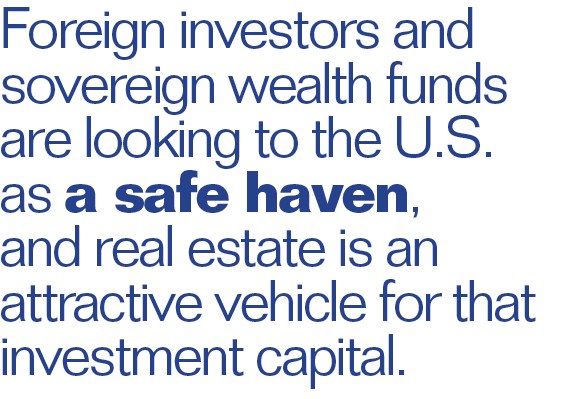U.S. equity REITs are coming off a stellar year with total returns for the sector at nearly 30 percent—double that of the S&P 500. Yet with valuations for many REITs already at pre-recession levels, industry analysts are skeptical that REITs will be able to keep up that pace for much longer.
There is no question that U.S. equity REITs posted some impressive numbers in 2014. According to the FTSE NAREIT U.S. Real Estate Index, all public REITs generated an average return of 27.15 percent in 2014.
“Over the long run, history would suggest that there is no way that is sustainable,” says Kevin Lindemann, director of the real estate group at research firm SNL Financial. Historical results do show that there have been instances when strong years have been followed by another big year of strong performance. In fact, REITs have posted double digit returns for six of the last 10 years. However, over a longer time period, the REIT market in the U.S. will generate a return somewhere in the 8 to 12 percent range, Lindemann says.
“Overall, the U.S. REITs we cover today appear to us to be roughly 20 percent or so overvalued relative to our estimates of fair value. So we are cautious on the space,” says Todd Lukasik, a senior analyst for the real estate sector with research firm Morningstar. Part of the reason that REITs are overvalued is due to the very low interest rate environment, which is favorable for REITs. “Longer term, we expect higher levels of interest rates, and we think that if that materializes that will be a valuation headwind for REITs,” he says.
Healthcare REITs, for example, posted returns that topped 33 percent in 2014. However, that sector is continuing to trade at a significant premium to net asset value (NAV) of about 25 percent, adds Lindemann.
“While that sector has put up very good performance numbers, it is difficult to see a lot of new investors flowing into that sector, just because valuations seem pretty full,” he says.
Performance drivers
Several factors helped to boost REIT performance last year. Notably, the REIT market bounced back from a relatively flat year in 2013, when the total return was 3.21 percent, according to FTSE NAREIT. “So investors may have felt like there were some good buying opportunities out there,” says Lindemann. REITs are also generating attractive dividend yields in a very low interest rate environment. Even with dividend yields in the REIT space at about 3.5 percent, which is down compared to historical levels, that is still relatively attractive compared to a lot of fixed-income alternatives.
 In addition, REITs are benefiting from an improving economy and more demand for real estate, while new construction remains limited. “The fundamentals behind commercial real estate right now are extremely good in pretty much any sector across the board,” says Rich Moore, a REIT analyst with RBC Capital Markets.
In addition, REITs are benefiting from an improving economy and more demand for real estate, while new construction remains limited. “The fundamentals behind commercial real estate right now are extremely good in pretty much any sector across the board,” says Rich Moore, a REIT analyst with RBC Capital Markets.
On top of that, the rest of the world is falling apart, adds Moore. Foreign investors and sovereign wealth funds are looking to the U.S. as a safe haven, and real estate is an attractive vehicle for that investment capital. “So you have a lot of factors that are working in the favor of REITs at the moment,” he says.
Winners and losers
To a certain extent, the high tide is raising all boats in the REIT industry. Last year, even the weakest property sectors were up at least 8 or 9 percent. Residential REITs, including both apartment and manufactured homes owners, were clear leaders in 2014. Manufactured home REITs posted total returns of 46.2 percent, while apartment REITs reported a total return of 40.04 percent, according to FTSE and NAREIT. Both sectors have likely benefited from the still recovering single-family home market. Apartments have seen steady renter demand, and manufactured homes likely received a lift from buyer demand for lower cost manufactured homes.
Sectors that RBC is bullish on for 2015 include community centers, multifamily and office. For example, robust job growth is expected to drive strong operating results for apartments and NOI growth for office buildings, while community center REITs are expected to benefit from external growth from acquisitions, redevelopment and new development activity.
So far, the positive momentum for the broader REIT sector has carried over into 2015. If many of those same drivers behind 2014 returns—namely, low interest rates, improving demand for real estate and global uncertainty—remain firmly in place, it could very well be another good year for REITs, says Moore. “On the other hand, if we see any slowing in fundamentals, or if interest rates bounce higher, then REITs could start to stall out,” he adds.

